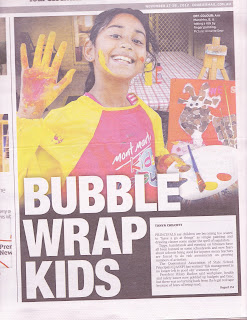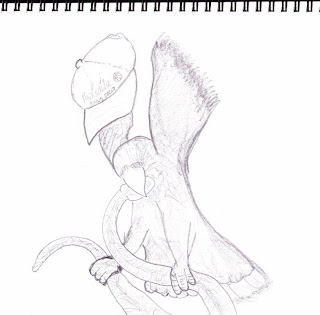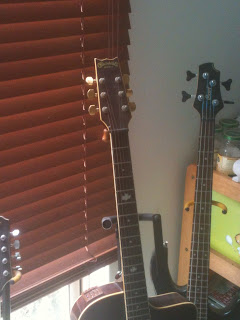Followed the theory, researched and planned...now it's time to put something to canvas (finally!)
Preparing canvas outlines with french curve templates before applying materials. Remains to be seen whether these lines show through paint when the many 'changes of mind' occur during the actual creation. (Guitar stands make excellent make-shift easels!)
Had the thought to paint this and call it "Blue Pools"... hahahaha!
...maybe attract even a minute fraction of the price the Australian Government paid for 'abstract expressionist', Jackson Pollock's "Blue Poles" back in the 1970's.
(but will have to find a more conventional way to recoup the cost of the new pool pump methinks!)
Abstract Expressionism - a catalyst for, or a product of, social and cultural revolution?
Australian society was still relatively conservative on the tail end of the global cultural revolution during and after the U.S. military-industrial cartel's, weapons 'trade show', which was the Vietnam conflict of the 1960s. To add to the mainstream conservative public's bemusement with the perceived 'scandalous' behaviours and philosophies of Treasurer, Dr. Jim Cairns, his parliamentary chief of staff, Junie Morossi and indeed Prime Minister, Gough Whitlam, came the purchase of this $1.3 million piece of abstract art. The gallery's director at the time, James
Mollison, was not able to authorize purchases over $1 million, so the
acquisition was personally approved by Prime Minister, Gough Whitlam.
Abstract Expressionism: Blue Poles. Artist: Jackson Pollock. [Image: Wikipedia}
At a time when Australia was crying out for a national identity of our
own, and subsequent to this break from conservative tradition, the Whitlam
Government went on to lead Australia's emergence as a nation with a social and
cultural conscience and consciousness through groundbreaking social and
cultural change such as Mabo and granting of traditional ownership of land title. The duly
elected Whitlam Government was historically 'dismissed' from office in 1975 on the back
of an archaic British monarchial instrumentality, the then Queen's "Sherif
of Nottingham", Governor-General, Sir John Kerr.
Did the
purchase of 'Blue Poles' ignite the conservative and monarchist push to retain
Australian culture as a hybrid of England?















.jpg)














